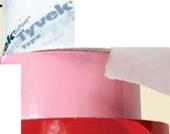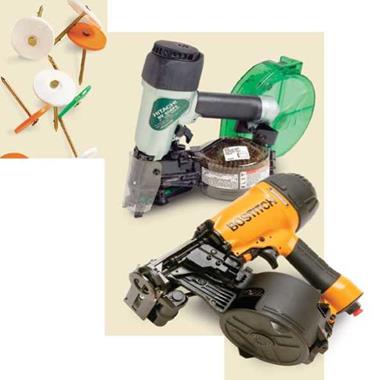The use of a gyratory compactor is another popular method worldwide for preparing laboratory samples. This piece of equipment is not new; this method of compacting samples was developed in the late 1930s and early 1940s.[48] Making samples with the use of the gyratory compactor is described in EN 12697-31, ASTM D4013-09, and ASTM D3387-83(2003).
This method of compacting samples consists of kneading a mix with a rotational force. The crucial features of the gyratory compactor are
• Angle of rotation
• Vertical pressure
• Number of gyratory rotations
• Initial (Ninitial)
• Design (Ndesign)
• Maximum (Nmax)
The air void content after an initial number of rotations (usually 9 or 10) are a measurement of the compactability of a mix.
There are several types of such instruments, of...
read more







 It never ceases to amaze me how many builders omit seam tape from housewrap installations. Although proper lapping is enough to create a watershed, all seams must be sealed to stop air infiltration. Taping the seams also helps to preserve the housewrap’s integrity throughout construction and makes the membrane less likely to catch the wind and tear.
It never ceases to amaze me how many builders omit seam tape from housewrap installations. Although proper lapping is enough to create a watershed, all seams must be sealed to stop air infiltration. Taping the seams also helps to preserve the housewrap’s integrity throughout construction and makes the membrane less likely to catch the wind and tear.


 Seam tape also provides a means to repair cuts, but every cut or penetration should always be treated like a horizontal or vertical seam. Seam tape is never used to make up for improper lapping. In fact, assume that the tape adhesive will fail eventually, allowing water to penetrate the drainage plane and wet the framing. In contrast, a proper lap can last forever.
Seam tape also provides a means to repair cuts, but every cut or penetration should always be treated like a horizontal or vertical seam. Seam tape is never used to make up for improper lapping. In fact, assume that the tape adhesive will fail eventually, allowing water to penetrate the drainage plane and wet the framing. In contrast, a proper lap can last forever.